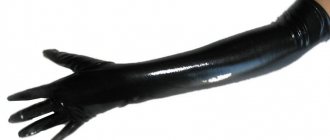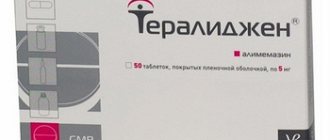Causes and development of pathology
The causes of the described pathology depend on the type of allergic reaction that developed when alcohol entered the body. Such reactions may be:
- true - appear less frequently;
- pseudo-reactions (false) - occur more often (according to some data, in 80-95% of all patients with an identified allergy to alcohol).
When a true allergic reaction develops, the body reacts to protein components that:
- used in the production of alcoholic beverages;
- formed as intermediate components or final components of alcoholic beverages.
A very small amount (residue) of intermediate components of alcohol production is enough to provoke an allergic reaction in a person when he drinks an alcoholic beverage. Such components remain with:
- disruption of the technological process due to lack of understanding;
- using cheap (and therefore often low-quality) raw materials;
- the production of alcoholic beverages on underground lines or even in home artisanal conditions, due to which the technological process is disrupted and the quality of the final product suffers.
In the latter case, a striking example is moonshine (homemade vodka), which contains a large amount of fusel oils that can cause, among other negative consequences (irritation of the stomach and intestines, damage to the pancreas), an allergic reaction. Often such consequences are cumulative, but since the allergy in some cases is not expressed, its manifestations may not be noticed, rushing to stop the signs of acute alcohol intoxication.
A true allergic reaction when drinking alcohol occurs less frequently than a pseudo-allergy. It, in turn, can develop as a reaction:
- immediate type;
- slow type.
Immediate hypersensitivity occurs when antibodies are activated - structures whose function is to neutralize antigens (foreign proteins). This reaction develops literally a few minutes or hours after drinking alcohol. The main tissue and cellular changes in this case are:
- vasodilation;
- increasing the permeability of their walls for large molecules;
- exudation is the accumulation of fluid in tissues, which leads to their swelling.
In the late stage of immediate hypersensitivity, cells of the immune system - eosinophils and neutrophils - are activated, so the presence of this stage can be determined by the results of laboratory analysis.
Delayed-type hypersensitivity develops due to the interaction of a foreign antigen protein (in this case an allergen) with macrophages ("eater" cells) and some types of lymphocytes (they are also part of the immune system). An allergic reaction of a hypersensitive type develops, as a rule, 24-72 hours after the allergen (alcohol) enters the body. The main tissue and cellular disorders that are observed are:
- compaction of tissues due to the fact that they are infiltrated (“impregnated”) with immune cells, like a cake with cream;
- an inflammatory process in tissue, manifested by such classic signs as redness, swelling, increased local temperature, pain, and dysfunction. Inflammation is also caused by tissue infiltration by T lymphocytes and macrophages.
Important
Two other known types of allergic reactions (anaphylactic and cytotoxic) do not occur with an allergy to alcohol.
What specific components cause a true allergic reaction to alcohol? These are protein inclusions of plant origin:
- wheat;
- malt;
- hop;
- yeast;
- sagebrush;
- strawberry;
- lemon;
- mint;
- ginger;
- hazelnut
and others.
As a rule, when a true allergic reaction to alcohol occurs, immunoglobulins of class E (IgE) are involved, less often class G.
A pseudotype reaction in allergies to alcoholic beverages occurs more often than a true one. It is triggered in response to additional substances that are used in the manufacture of alcoholic beverages:
- dyes;
- flavorings that imitate the smell of any additives (they are often abused in the production of cheap alcoholic drinks);
- odor enhancers;
- stabilizers.
note
In 80-85% of all cases, pseudotype allergies are provoked by additives used in the production of alcoholic beverages to give them an original taste.
In a pseudotype reaction, antibodies do not attack antigens, but the mechanism of inflammatory damage is immediately launched. But it has been noted that some true allergens can also provoke a pseudo-allergy to alcohol - in total, an enhanced allergic effect occurs; a person who has not previously complained of allergic manifestations can suffer quite severely.
One of the most powerful tissue provocateurs of allergies is histamine. Typically, it is found in alcoholic drinks such as:
- beer;
- punch made from beer;
- fermented wine (in particular, its red varieties);
- cocktails made with red wine.
Often, allergens that are identified in an alcoholic product themselves provoke the development of a not very strong reaction. But alcoholic drinks may contain substances that cause an increased release of histamine into the blood, thereby intensifying the allergic reaction. They are called histamine liberators. The strongest of them are:
- dyes;
- flavorings.
In addition, such provoking foods are found in food that a person can take after drinking a portion of alcohol (snack it). This:
- chicken protein (eggs, meat);
- products made from wheat flour;
- citrus;
- crayfish, shellfish, shrimp and other seafood
and so on.
Such nuances should be taken into account when studying the causes and development of the mechanism of allergy to the same type of alcoholic drink in different people.
Other factors that contribute to the development of allergies to alcoholic beverages have also been identified. This:
- regular alcohol abuse;
- immunity disorders – congenital and acquired immunodeficiencies;
- autoimmune diseases are pathologies in which the body perceives its own tissues as a foreign agent and fights them;
- infectious diseases - they require the participation of the immune system and provoke its physiological “aggression”, which can affect the formation of an allergic response when drinking an alcoholic drink;
- chronic diseases of the gastrointestinal tract.
In the latter case it is:
- gastritis is an inflammatory lesion of the gastric mucosa, against which true and pseudoantigens more easily penetrate the stomach wall and then into the bloodstream;
- ulcer of the stomach and duodenum - the appearance of a deep defect in their wall. The principle of involvement in the described disease is the same;
- Pancreatitis is an inflammatory process in the tissues of the pancreas. Against this background, the synthesis of pancreatic enzymes suffers, which is why the mechanisms of food absorption, which can act as histamine liberators, “break down”;
- cholecystitis is an inflammatory lesion of the mucous membrane of the gallbladder with subsequent disruption of bile secretion. The mechanism is the same as for pancreatitis;
- inflammatory damage to the bile ducts. The mechanism is the same.
In addition, an allergic reaction to alcohol can occur due to the use of certain components in its production - these are:
- certain sulfur compounds – used to inhibit processes caused by bacterial microflora (souring, fermentation);
- elements of aspirin;
- sulfites – produced as a result of wine fermentation, used to ensure the safety of bottled alcoholic beverages.
Reasons for appearance
The reasons for the body's allergic reaction to alcohol are unclear even to the luminaries of allergology. Is there an allergy to alcohol as such? Ethyl alcohol is produced in the human body and is normally found in the blood in an amount of approximately 0.2 mg per liter (for comparison, the maximum permissible concentration for driving a car is a thousand times higher). Can there be an allergy to an endogenous, that is, produced by the body, substance?
In addition, it is not entirely fair to call this response of the immune system an allergy. This term refers to the production of antibodies to an allergen protein with the subsequent development of inflammation, and in the case of alcoholic beverages, as a rule, we are not talking about the creation of antibodies and inflammation begins immediately.
As a rule, the devil is in the details, not in the alcohol itself. The production of alcoholic beverages is a rather complex process involving all kinds of products. Wheat, barley, grapes, brewer's yeast, hops - allergies can happen after consuming all of this. Fruits and berries, the fermented juice of which turns into wine, contain natural salicylates. The very useful substances themselves, which became the precursors of aspirin, sometimes become a reason for inappropriate behavior of the immune system.
The so-called wine fining can also contribute. To clarify and increase the speed of ripening, winemakers add fish glue, egg white, casein, albumin and many other substances to the drink. Since they all contain proteins, corresponding antibodies can be produced against them.
In addition to all of the above, numerous synthetic additives are to blame. Dyes, stabilizers, acidity regulators, preservatives... For example, sodium pyrosulfite, which is used to sterilize beer and wine, can cause asthma attacks and anaphylactic shock. Just don’t declare war on all food additives at once—not all of them are harmful.
Alcohol allergy symptoms
Manifestations of allergies to alcohol can be very different - the clinical picture depends on factors such as:
- the component that caused the allergic reaction;
- its amount entering the body;
- features of the reaction of a particular organism;
- the presence of histamine liberators;
- patient's age;
- the presence of other types of allergic reactions;
- various concomitant diseases and pathological conditions of varying severity - especially from the immune system.
note
The clinical picture that manifests the described pathology, with all its diversity, is almost the same for true and false allergies.
Manifestations of an allergy to alcohol include:
- skin;
- respiratory (breathing);
- digestive;
- anaphylactic (general).
Most often, an allergy to alcohol is manifested by skin symptoms. The signs of the described pathology are:
- rash;
- itching
As a rule, the rash is similar to the one that occurs with urticaria - these are blisters with the following characteristics:
- by localization - on different parts of the skin, but most often on the skin of the face and upper half of the chest;
- in size – small, the size of a millet grain;
- by quantity – multiple;
- by the nature of their mutual position - they can form groups, and when there are large numbers, merge;
- color – pale pink;
- the shape is flat.
Pseudoallergy to alcohol manifests itself in a richer clinical picture:
- the rashes are more extensive and spread to the skin of the face, torso, arms and legs;
- The “spectrum” of primary elements is wider - in addition to the rash, as with urticaria, papules (plaques slightly raised above the surface of the skin), erythema (red spots), macules (areas of skin with discoloration), pinpoint hemorrhages, and large blisters are detected.
Respiratory symptoms of an allergy to alcohol are similar to those that occur with:
- allergic rhinitis;
- bronchial asthma.
In the first case, this is usually:
- liquid, colorless, transparent nasal discharge;
- difficulty in nasal breathing;
- itching and burning in the nasal passages.
The clinical picture of an allergy to alcohol, reminiscent of bronchial asthma, is:
- shortness of breath - difficulty inhaling and exhaling;
- suffocation – a feeling of lack of air.
Symptoms of an allergy to alcohol, reminiscent of those in diseases of the gastrointestinal tract, are:
itching and burning in the mouth;- numbness of the tongue, feeling that it is enlarged;
- nausea and vomiting that does not bring relief;
- stomach ache;
- loss of appetite or lack thereof;
- diarrhea.
Symptoms of anaphylactoid type with an allergy to alcohol will be as follows:
- dizziness;
- general weakness;
- headache;
- heartbeat;
- lowering blood pressure;
- difficulty breathing.
The clinical picture of pseudoallergy to alcohol may be similar to vegetative-vascular type reactions with symptoms such as:
- skin redness;
- feeling of heat throughout the body;
- severe migraine-type headaches;
- feeling of lack of air;
- diarrhea.
Diagnosis of allergy to alcohol
Diagnosing an allergy to alcohol can be difficult - such a disorder often manifests itself in a clinical picture, the symptoms of which may resemble non-allergic pathology. This is especially evident when the body is exposed to various components of alcohol - factors that provoke an allergic reaction. In addition, manifestations of an allergy to alcohol may be inexpressive against the background of other disorders associated with its entry into the body - namely:
- cardiovascular;
- toxic;
- from the gastrointestinal tract
and so on.
The main difficulties of diagnosis lie in identifying among the many components of alcohol the very allergen that provoked the body’s reaction.
Based on this, any information will be useful - the patient’s complaints, details of the anamnesis (history) of the disease, the results of additional research methods (physical, instrumental, laboratory).
When studying the medical history, the following nuances should be clarified:
- whether the patient took alcohol;
- what kind of alcohol and in what quantity was consumed;
- where the alcoholic drink was made;
- whether the intake of alcoholic beverages was accompanied by the consumption of food products, and if so, which ones;
- How long after drinking alcohol did the first manifestations of allergies occur?
- whether the patient previously had similar reactions;
- whether the victim has previously had other allergic reactions.
The results of a physical examination can be very different - they depend on the type of allergy to alcohol (skin, respiratory, etc.). This may reveal:
- upon examination - redness of the skin, the presence of a rash (vesicles, papules, large blisters), traces of scratching;
- upon palpation (palpation) - an increase in skin temperature with skin manifestations of allergies;
- with percussion (tapping) - without any features;
- during auscultation (listening) of the lungs - with the respiratory type, weakened breathing, wheezing, with a reaction from the gastrointestinal tract - increased intestinal peristaltic noise with diarrhea.
The following can also be determined:
- when measuring the pulse - its increase;
- when measuring blood pressure - its decrease.
Instrumental research methods are used to make sure that symptoms of organs, organ systems and tissues did not appear due to their somatic damage, but as a result of an allergic reaction to alcohol. To narrow the range of instrumental methods, in some cases it is necessary to consult related specialists. In general, the following research methods may be useful in diagnosing an allergy to alcohol:
- X-ray examination of the chest organs;
- plain radiography of the abdominal organs;
- ultrasound examination of the abdominal organs (ultrasound);
- magnetic resonance imaging of the abdominal organs (MRI);
- fibrogastroduodenoscopy (FGDS);
- duodenal intubation;
- electrocardiography (ECG);
- bronchoscopy;
- bronchography;
- spirometry
and others.
Laboratory research methods used in diagnosing alcohol allergies include:
General blood test - an allergic type of reaction is indicated by an increase in the number of eosinophils. Since an inflammatory reaction of tissues occurs, a slight increase in the number of leukocytes (leukocytosis) and ESR may be observed;- allergy tests - cutaneous, intradermal, subcutaneous. They are carried out with allergens that are part of alcoholic beverages (wheat, yeast, and so on);
- determination of allergen-specific immunoglobulins (classes E and G);
- histamine test - performed if a pseudo-allergic type of allergy to alcohol is suspected. In this case, a potential allergen is introduced into the duodenum, and the reaction to it is analyzed.
Treatment
Of course, it is easier to avoid any disease than to treat it, so before drinking alcohol, carefully study its composition.
By the way, “pure” alcohol in the form of vodka or cognac is much less likely to cause an allergic reaction compared to complex cocktails that contain a large number of ingredients.
In addition, “calculating” an allergy when drinking the same drink is much easier. By the way, mixing alcoholic drinks is also harmful because they can interact with each other, and an allergy will appear to the resulting chemicals.
- If you do not have alcohol intolerance, but an allergic reaction still appears, it makes sense to experimentally find a drink that is “safe” for you, and it is advisable to choose from expensive and high-quality ones.
- If the patient's condition is serious, then you can alleviate it by rinsing the stomach with water and inducing vomiting. This will reduce the concentration of allergens in the body and remove those that have not yet been absorbed into the blood from the gastrointestinal tract.
- A simple remedy like activated carbon will be a good helper; it binds and removes toxins perfectly.
If, based on all the symptoms, you recognize an allergy, no matter to alcohol or to a snack, you need to take an antihistamine, preferably a second or third generation. For example, Claritin or Zyrtec.
They can be in tablet or liquid form (in the form of drops).
In general, antihistamines should be prescribed by a doctor, but in case of emergency you can take them yourself:
- For adults, the daily dose of Zyrtec is 10 mg, which is 20 drops or one tablet. The dose can be taken once. This remedy can replace any other with the international name “Cetirizine”.
- "Claritin" or "Loratadine" comes in the form of syrup or tablets. It is taken once a day, one tablet or two teaspoons of syrup (10 ml). If there are severe liver disorders, which is not uncommon with frequent alcohol intake, then the daily dose is taken every other day.
- After taking the antihistamine, you need to wait a few minutes and give the patient Prednisolone. This hormonal drug copes very effectively with the manifestations and consequences of allergies, but you should not abuse it.
- If the condition is acute, then the daily dose is 4-6 tablets per day. This remedy also comes in the form of injections; before use, be sure to read the instructions and strictly follow them.
- If an allergic reaction manifests itself in the form of anaphylactic shock, then immediately call an ambulance, and while it is driving, provide first aid: the patient should be placed horizontally on a hard surface, legs raised up, give access to fresh air, empty the oral cavity of vomit, if so happened, and put your head on one side so that the person does not suffocate.
Differential diagnosis
Differential (distinctive) diagnosis of allergy to alcohol is carried out, as a rule, with such diseases and pathological conditions as:
- food allergy – intolerance to certain types of foods or their components;
- allergic dermatitis – inflammatory lesion of the skin caused by allergens;
- pathologies of the digestive system;
- acute and chronic intoxications - infectious, food, medicinal, and so on;
- neurocirculatory dystonia (it is based on reactions of a vegetative-vascular nature);
- congenital intolerance to alcohol.
Diagnostics
First of all, it is necessary to carefully collect anamnesis, data on alcohol consumption, the composition of drinks, and food intolerances. The allergen is detected using so-called skin tests - the allergist performs a series of intradermal injections of microscopic volumes of potential irritants, observing the body's response.
An allergy to ethanol cannot be detected in this way, but it is quite possible to determine the component of the drink. In addition to direct allergy tests, the allergist is obliged to conduct differential diagnostics. Perhaps it’s not a matter of allergies, but of poisoning, infectious diseases, diseases of the gastrointestinal tract and endocrine system. A nervous disorder may also occur.
You can also test for immunoglobulin levels in the blood. Immunoglobulins of a certain class are responsible for hypersensitivity to ethyl alcohol, and through this analysis an allergic reaction to alcohol can be detected.
Alcohol allergy treatment
Treatment of allergy to alcohol is conservative. The therapy is based on the following purposes:
- ban on the consumption of alcoholic beverages;
- dietary nutrition;
- drug therapy.
note
If you are allergic to alcohol, the ban applies to alcoholic drinks of any strength and their derivatives (cocktails, punches, mulled wine, etc.), as well as to some products that may contain alcohol - in particular, candies (like Drunken Cherry).
The basis of dietary nutrition is the restriction of consumption:
- foods that contain large amounts of histamine and tyrosine;
- Histamine-liberating products are hard cheeses, sausages, sausages, sausages, brawn, smoked and pickled products, products containing food coloring and preservatives.
Drug therapy is practiced when the above mentioned treatment methods are ineffective. Appointed:
- desensitizing drugs - they “neutralize” histamine;
- glucocorticosteroids - they are used when antihistamines are ineffective, in severe cases of an allergic reaction to alcohol, or when complications develop;
- general strengthening agents - in particular, vitamins in the form of injections or pharmaceutical complexes for oral (by mouth) use.
Forecast
The prognosis for an allergy to alcohol varies, but in general it is rather favorable. Timely detection of this pathological condition and adequate prescriptions help to quickly stop it.
The prognosis worsens with:
- self-medication;
- late presentation to the clinic;
- repeated contact with the allergen;
- cross type of allergy.
It should be taken into account that even after successful relief of an allergic reaction, it may reoccur upon repeated contact with the allergen (alcohol).
Kovtonyuk Oksana Vladimirovna, medical observer, surgeon, consultant doctor
2, total, today
( 50 votes, average: 4.82 out of 5)
Hay fever, or hay fever: symptoms and treatment
Allergy to insulin: causes, symptoms, treatment
Related Posts
Is it possible to get rid of allergies?
Those who want to know how to treat an allergy to alcohol should understand that if the allergy exists, it will not go away. Medicines can only relieve symptoms. It should be remembered that the more allergen enters the body, the stronger the reaction becomes.
Therefore, there is no answer to how to cure an allergy to alcohol with medications. The only way out in case of a severe alcohol allergy is to abstain from alcohol in general or from those varieties to which you are allergic. If a person has mild symptoms of an alcohol allergy, treatment is very similar to that of a common food allergy.
In mild cases, medication such as antihistamines, which can be purchased at a pharmacy, is suggested as treatment. These medications should help reduce symptoms that are caused by alcohol irritants. This type of alcohol allergy pill will help reduce allergy symptoms (itching, rash) that appear after drinking alcohol. Therefore, antihistamines are the answer to the question of how to remove allergens from the body.
In case of severe symptoms and moderate alcohol allergies, Epinephrine will help. Most often, Epinephrine is used as an injection of adrenaline with a syringe or auto-injector (syringe pen), which is much more convenient. A timely injection of Epinephrine can save a person's life. Asthmatics should carry with them a special inhaler prescribed by their doctor. Given the complexity of their illness, it is imperative to avoid any drinks that cause allergies.
Activated carbon, white clay, and various gels (for example, Enterosgel) are often used to treat food allergies. But in the case of alcohol, these substances are most often helpless, since alcohol is absorbed into the blood too quickly. No matter how effective the gel is in absorbing toxins, in order for it to at least slightly resist alcohol, firstly, you need to eat very heavily, and secondly, take a very large dose of the drug Enteros-gel. And only after that it will be possible to drink a little. Perhaps some of the small dose of alcohol will be neutralized.












